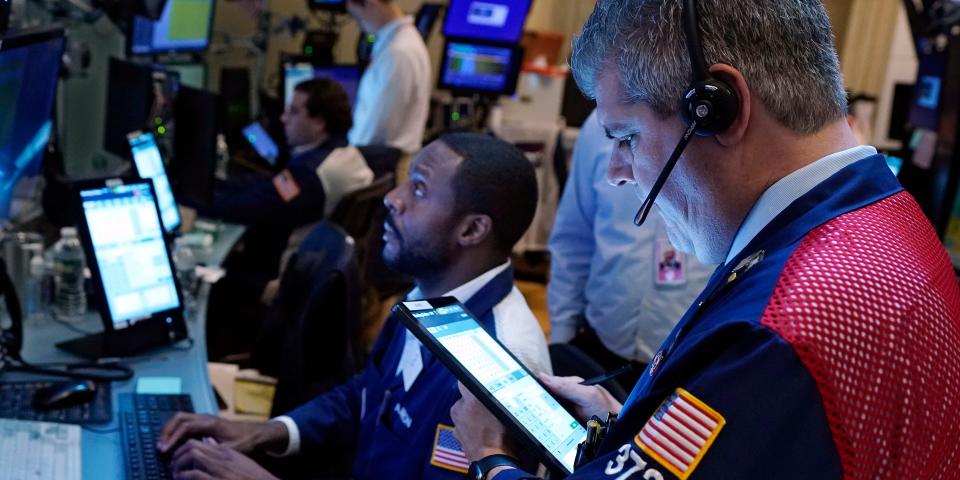Nasdaq turns higher in volatile session as investors weigh recession risks

US stocks ended Tuesday's session mixed in volatile trade after the Independence Day holiday break.
The Nasdaq Composite turned higher with gains for large-cap tech stocks.
The S&P 500's energy sector slid as US oil prices fell below $100 a barrel.
US stocks ended mixed Tuesday, with tech shares running higher while investors pulled down energy names alongside oil prices as global recession worries flared up after the Independence Day break.
All three of Wall Street's major indexes suffered during the session until the Nasdaq Composite swung up, aided by gains among large-cap advancers including Meta Platforms and Google parent Alphabet.
The S&P 500 edged higher, though eight of its 11 sectors lost ground. The energy sector slumped the most, down more than 5%, with oil prices under pressure on the back of a surging US dollar. Oil majors Chevron and Exxon Mobil fell.
Here's where US indexes stood at 4:00 p.m. on Tuesday:
S&P 500: 3,831.39, up 0.16%
Dow Jones Industrial Average: 30,967.82, down 0.42% (129.44 points)
Nasdaq Composite: 11,322.24, up 1.75%
The US Dollar Index hit a fresh 20-year high largely on the back of a slide in the euro as a regional energy crisis threatens to pull the eurozone economy into a recession. The index extended gains Tuesday after data showed US factory orders rising by a stronger-than-expected rate of 1.6%.
The US bond market flashed a recession signal earlier Tuesday with an inversion of the 2-year yield and the 10-year yield. The 10-year yield during the session fell.
"The Federal Reserve wants slower economic growth to curb inflation using interest rates as a brake on the overheated job market. The good news is that the bond market may have already priced in much of the Fed's action plan," said Carl Ludwigson, managing director at Bel Air Investment Advisors, in a note as part of the firm's outlook for trading in the second half of 2022.
"Especially for the more expensive corners of the equity market, the challenge has been multiple compression that may continue with rapid rate hikes and quantitative tightening while earnings slow," he wrote. "That said, much of the monetary policy tightening appears to be priced in the bond market with the 2-year Treasury rate already incorporating expected Fed hikes."
Around the markets, the S&P 500 won't hit a bottom until there's a "panic" level of selling in the stock market, a markets newsletter told investors on Tuesday.
Economist Mohamed El-Erian said there are three positive outcomes of the stock market's downturn.
Oil prices dropped. West Texas Intermediate crude slumped 8.3% to $99.43 per barrel. Brent crude, the international benchmark, slipped 9% to $103.13.
Gold fell 1.9% to $1,766.50 per ounce. The 10-year yield flipped down 8 basis points to 2.81%.
Bitcoin turned higher, up 2.8% to $20,070.06.
Read the original article on Business Insider

 Yahoo Finance
Yahoo Finance 